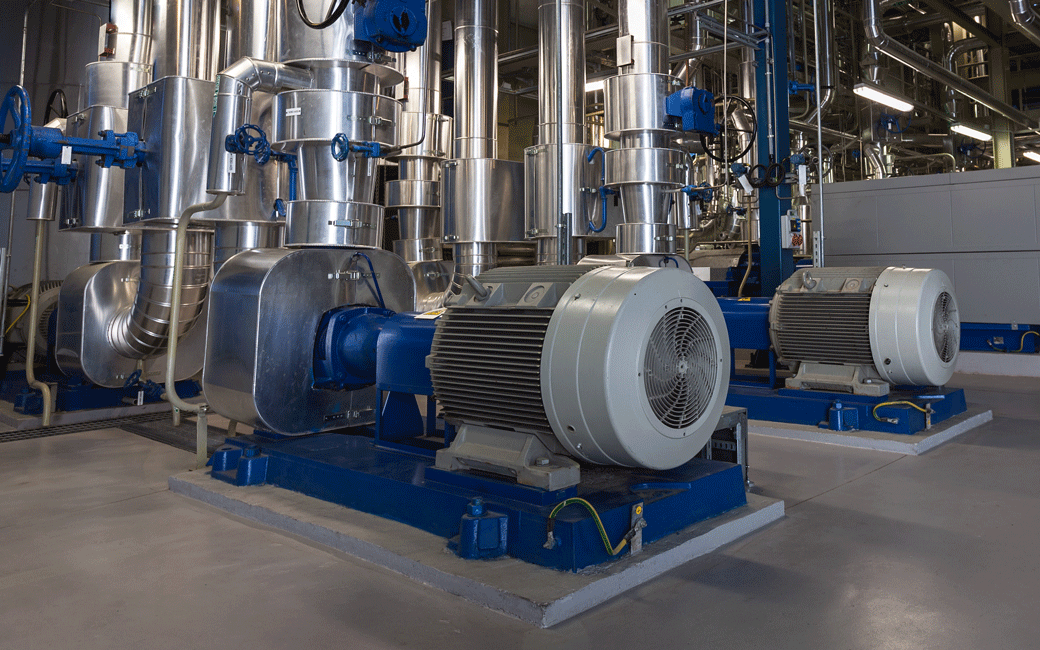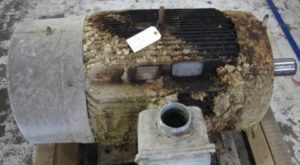By general design, electric motors are typically designed for an ambient temperature range of 40C (100F) to about -20C (-4F). Below -25C (-13F), you must consider the lubrication and material being used in the manufacturing of the motor. Most common material changes would be in fans, shafts, frames, and end brackets between -25C (-13F) and -60C (-76F) depending on the material type and application. Totally enclosed motors should also be considered for motors that operate in a consistently harsh environment. Motors should not be stored in extreme cold conditions, rather store them in an indoor climate controlled environment and rotate the shafts periodically to distribute the lubrication. It is also important to remain committed to online and offline testing of motors in these environmental conditions to avoid catastrophic failure due to motor degradation as a result of climate change and material breakdown.
Simplify Your Grease Lubrication Program
How to find and eliminate sources of complexity.
Grease is made up of oil, thickener, and additives. Understanding how each component works can help you make the right choices for your needs. Our partners at ExxonMobil want you to understand the various types of grease, and how to select the right grease for the right application. Also identified are common sources of complexity in a grease program and the impact it can have on the reliability and life of your equipment.
Practical Advice for Motor Protection
New IEEE standard provides guidance for motor protection for industrial and commercial applications.
The Institute of Electrical and Electronics Engineers (IEEE) has published a new standard: IEEE Std. 3004.8-2016, “Recommended Practice for Motor Protection in Industrial and Commercial Power Systems.” If you’re an electrical professional who deals with a broad spectrum of motor protection schemes, including low- and medium-voltage AC and DC motors, then you need to become familiar with this standard — if you haven’t already. Following are some key takeaways from this recent release.
The “color books” are in the process of being reviewed/updated, and their designations changed. Each of the 13 books in the “IEEE Color Book” standards series deals with a different aspect of electrical power production, distribution, and utilization in industrial and commercial power systems; 3004.8 supersedes Chapter 10 of the “Buff” book, IEEE 242-2001.
Work began on this process with the formation of a working group in September 2012 and ended with final IEEE approval Dec. 6, 2016. The document became available for purchase on May 23, 2017 on the IEEE website (www.ieee.org).
Types of protection
Most electrical professionals are familiar with overcurrent (fuses, breakers), overload (starter heaters) or thermal (thermostats, RTDs) protection. These are the basics, some of which are required by governing agencies and codes. If a critical application requires additional protection, there are many choices available, including:
1. Under or overvoltage
2. Undercurrent (say a belt breaks)
3. Bearing temperature
4. Loss of field (important for shunt wound DC motors)
5. Single phasing
6. Current or voltage balance
7. Number of starts
8. Vibration
Relays are available to be programmed for these and many other protection requirements. They can be included to provide an alarm and/or remove the motor from service if the set limits are exceeded for each parameter.
Low-voltage and medium-voltage protection
These types of protection are covered in separate sections of the standard. The principles are basically the same, but medium-voltage requirements are more demanding because of the physics of opening the circuit and the personnel and equipment protection necessary. Annex B lists more than 100 devices that can be employed to monitor, report, and interrupt the circuit (if needed) of the motor while in operation.
Overcurrent, overtemperature, undervoltage, vibration, and bearing protection devices are just a few of those listed. Smart devices can be programmed to monitor the motor’s current versus time during starting. If the current remains high for a period of time that could lead to motor damage, the device can intervene in a method prescribed by the user.
DC motor protection
A new section of the standard on DC motor protection was drafted by EASA Senior Technical Support Specialist Chuck Yung. This section covers protection for contamination, moisture, temperature, and dielectric stress. Potential failure conditions and protection methods and devices unique to DC motors are covered.
Source: https://www.ecmweb.com/motors/practical-advice-motor-protection
The Five Whys of Equipment Failure
The “five whys” refers to the practice of asking five times why a motor failure occurred in order to get closer to the root cause of the problem. Failure to determine the root cause can result in treating the symptoms of the problem instead of its cause, in which case you will continue to have the same problems over and over again.
- Why did the motor fail? It shorted to ground.
- Why did it short to ground? The ground wall insulation failed.
- Why did the ground wall insulation fail? The insulation overheated.
- Why did the insulation overheat? Excessive ambient temperature.
- Why was the ambient temperature so high? The cooling fan motor was not operating correctly.
Just replacing the motor would not solve the cooling fan problem and the new motor would be in the same high risk environment.
Mission Critical
On any given day there are hundreds, or maybe thousands, of assets driving a plant environment. Each application within the plant has various tasks hence establishing the need for assets of different sizes, cost, and criticality. All assets need to be cared for cost effectively; however, there are usually several assets per plant that are labeled critical assets which receive a little extra care. Review your plant’s assets, identify and verify the condition of the critical assets regularly, and use the PM tools and methods that are available to optimize the integrity of those assets before other less critical assets. Based on the risk to business, on average less than 20% of assets within the plant should be labeled critical.
Source: Maintenance and Reliability Best Practices by Ramesh Gulati
- « Previous Page
- 1
- …
- 5
- 6
- 7
- 8
- 9
- …
- 17
- Next Page »


